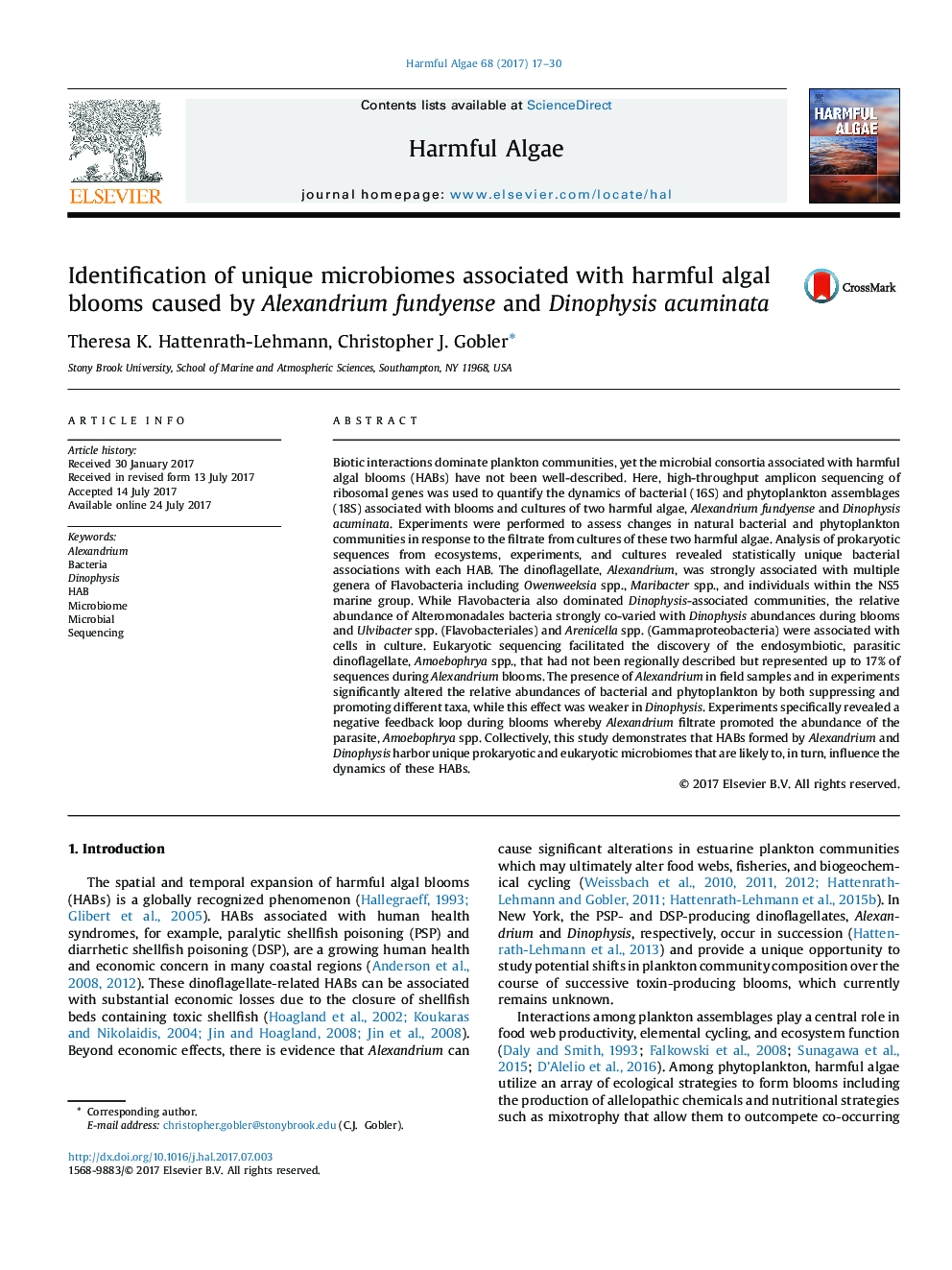| کد مقاله | کد نشریه | سال انتشار | مقاله انگلیسی | نسخه تمام متن |
|---|---|---|---|---|
| 5765751 | 1626904 | 2017 | 14 صفحه PDF | دانلود رایگان |

Biotic interactions dominate plankton communities, yet the microbial consortia associated with harmful algal blooms (HABs) have not been well-described. Here, high-throughput amplicon sequencing of ribosomal genes was used to quantify the dynamics of bacterial (16S) and phytoplankton assemblages (18S) associated with blooms and cultures of two harmful algae, Alexandrium fundyense and Dinophysis acuminata. Experiments were performed to assess changes in natural bacterial and phytoplankton communities in response to the filtrate from cultures of these two harmful algae. Analysis of prokaryotic sequences from ecosystems, experiments, and cultures revealed statistically unique bacterial associations with each HAB. The dinoflagellate, Alexandrium, was strongly associated with multiple genera of Flavobacteria including Owenweeksia spp., Maribacter spp., and individuals within the NS5 marine group. While Flavobacteria also dominated Dinophysis-associated communities, the relative abundance of Alteromonadales bacteria strongly co-varied with Dinophysis abundances during blooms and Ulvibacter spp. (Flavobacteriales) and Arenicella spp. (Gammaproteobacteria) were associated with cells in culture. Eukaryotic sequencing facilitated the discovery of the endosymbiotic, parasitic dinoflagellate, Amoebophrya spp., that had not been regionally described but represented up to 17% of sequences during Alexandrium blooms. The presence of Alexandrium in field samples and in experiments significantly altered the relative abundances of bacterial and phytoplankton by both suppressing and promoting different taxa, while this effect was weaker in Dinophysis. Experiments specifically revealed a negative feedback loop during blooms whereby Alexandrium filtrate promoted the abundance of the parasite, Amoebophrya spp. Collectively, this study demonstrates that HABs formed by Alexandrium and Dinophysis harbor unique prokaryotic and eukaryotic microbiomes that are likely to, in turn, influence the dynamics of these HABs.
Journal: Harmful Algae - Volume 68, September 2017, Pages 17-30